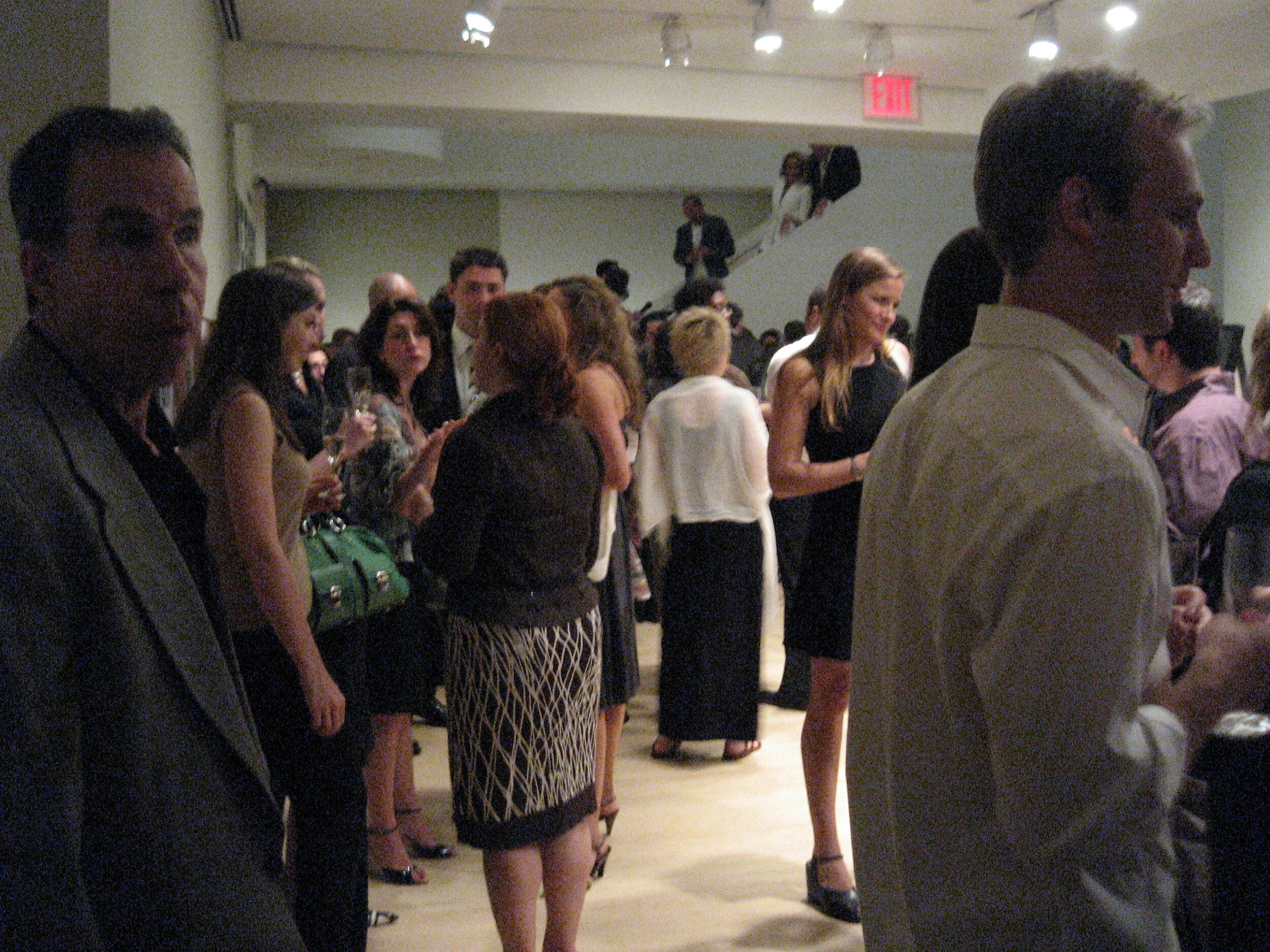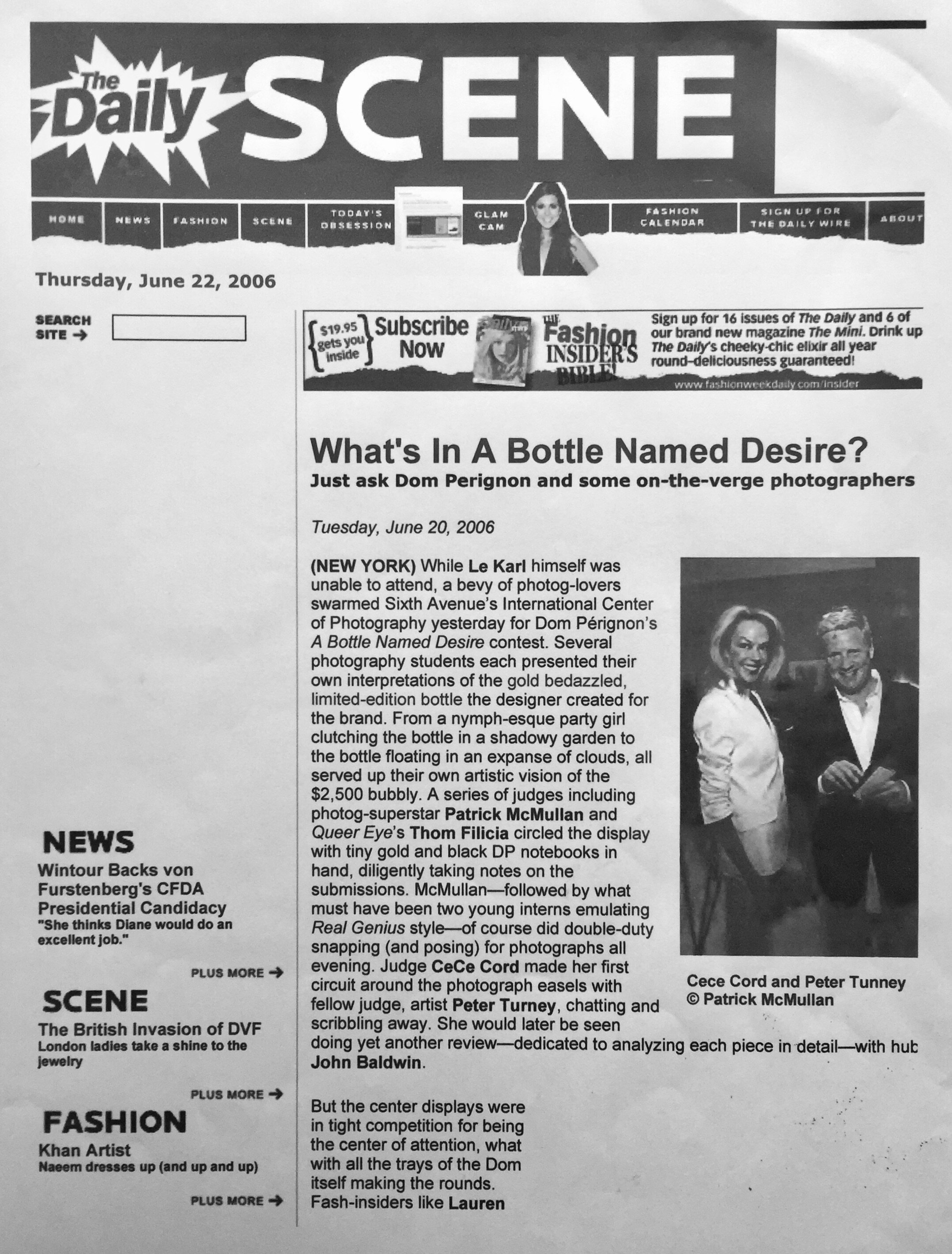Dom Pérignon Abstracts
A friend of mine recently asked me, “Is there anything sexier than Dom Pérignon?” Honestly, I don’t know but thinking about the iconic bottle conjures up ideas of the kind of old world glitz, glamour and prestige that most people, myself included, can only ever dream of.
When the Dom Pérignon rep came to speak to our school in the spring of 2006 to talk about having the opportunity to participate in the competition I was interested but not sure I was going to be able to go. Since I was white knuckling my way through my final portfolio reviews, which if you’ve ever had to do you know is a test of fortitude, patience and endurance, time was a precious commodity. Peripherally, I also wasn’t 100% positive anyone except for the advertising students were intended to go but, then it was announced that the competition was open to anyone currently enrolled as a second year student, regardless of their discipline and my curiosity was officially piqued.
First impressions go a long way and the gold ingots that ran up and down the sides of the bottle that Karl Lagerfeld designed immediately reminded me of a starry sky. I took a lot of notes and observations about the bottle during that first meeting which I thought would help me decide on an idea before I began to work on the project. Since I was about to start portfolio reviews and there were only a few weeks between when I was able to start shooting the bottle and when the project was due I thought whatever preliminary work I could do before I got into the studio was important.
The parameters for the entries to the Dom Pérignon-Karl Lagerfeld ‘A Bottle Named Desire’ Photography competition were simple. Create a series of images that interpreted the bottles which Karl Lagerfeld designed to commemorate Dom Pérignon’s 1998 vintage. There had to be three images, they had to work together and couldn’t be larger than 8x10, but otherwise we were pretty much given free range. I bounced a lot of different ideas around my head as the weeks rolled on most of them were complete crap. I toyed with the idea of personifying the bottle but I decided early on that personifying the bottles, while a fun idea, had been done and would likely be done by someone else much better at it than myself. It also felt a bit too obvious. I really wanted to create a unique experience with my project that said something about the bottles. In the end I took an idea I had been developing as part of another photography-digital art project, my Fruit Abstracts series, and decided I wanted to lean into it and expand it to see if I could figure out a way to marry the two ideas.
In the gallery at the International Center for Photography in New York City
I did a lot of very loose sketching before I started shooting. Once the bottles arrived I kept it very simple, did my planned series of setups, got my main shots down and got to work. Since I didn’t have a computer or printer at home I had to do all my work in the digital lab, and there was a time factor, I had to progress pretty very quickly. I had about two weeks to work on my “final images” and I was done with all the heavy lifting by the end of the first full week. Adobe Photoshop and digital imaging was still pretty new to me at the time so I was learning as I went. I was really excited about the digital aspects of project but I also really didn’t want it to be more about the technology than the bottles. Had I been doing this as a primarily Adobe project I would have said “lets see what this software can really do” and focused more on the capacity of the software and really pushing my capabilities with it, but it wasn’t.
The final step was printing and while challenging it wasn’t as hard as I thought it would be. Working with layered images can be tricky when it comes to printing something with a lot of different layers, particularly because each layer could require a different adjustment. However, my files were pretty solid and it really wasn’t the complicated process I thought it would be to create the luminous quality I was looking for in the prints.
In the end my final Dom Pérignon Abstracts did not stray too far from my initial design. The entire project took just under a month to finish from the initial meeting to dropping off the finished, matted project. There are three images in the final series which are numbered and are meant to work both as individual images and together as different parts of the story. My Dom Pérignon Abstracts explore the idea of the iconic brand as a timeless ethereal entity that bridges the gap between past, present and future. By using a combination of traditional and non-traditional photographic processes this series reflects on the inception, culmination and conclusion of the creative processes as part of our ongoing natural and creative cycles.
just for fun some of the clips and places where they popped up.
If winning the first round in Boston was a pleasant surprise then winning in New York was mind blowing. It’s not that I didn’t think my work was good because, of course I did… you have to, if you’re going to enter your work into any type of competition. I just didn’t actually expect to win. Especially with all those much cooler, probably more skilled, more traditional photographers milling about the gallery at International Center of Photography in June of 2006. It was a pretty amazing evening. The other entries was absolutely incredible and they really highlighted the incredible range of skill and through the varying interpretations of the bottles design.
It is still amazing to me how lucky I was to be able to take advantage of the opportunity I was presented with and produce something of this nature. I know that it was a unique opportunity and one which most people won’t have so I can only thank LVMH Dom Pérignon for giving me the opportunity to flex my creative muscles in this fashion. Would I work on something like this again? Absolutely.
Looking back at the experience I learned so much as I worked through the process of creating the series. At the time it was a big reach for me. Be that as it may there have always been a few key things that have really stuck with me from that experience. First, it is important to trust your vision and follow your instincts. Most of the time you don’t get a Carte Blanche and you have to work with clients, even so speak up for your ideas. Although in the end my Dom Pérignon Abstracts were very well received, there were still some people along the way who made it very clear that they did not think my project was a good, they didn’t think it should have won because it wasn’t “real photography,” and then some folks didn’t think it worth the fuss. It was up to me and I decided I wanted to take the risk, it paid off. Doesn’t always happen. Second, create work that you are proud of. Winning anything is great but it doesn’t matter if the work you create isn’t something you feel really good about having created and want to talk about, because whatever you present to the world people are going to ask about. I still love the way my Dom Pérignon Abstracts turned out, and I am proud of all the hard work I put in to make them. Third, photography is just the medium. As a medium it constantly evolving and ultimately the only limitation on it is your skillset and imagination, so don’t limit yourself. (this applies to not just photography but everything). Finally, If you get the chance to participate in something that feels like a once in a lifetime opportunity, do it. (don’t put your life in danger, and don’t do anything illegal). Not all opportunities are going to be good, and not all opportunities will pan out the way you want them to but every opportunity is a chance to grown or learn something new and you’ll never know unless you try.




